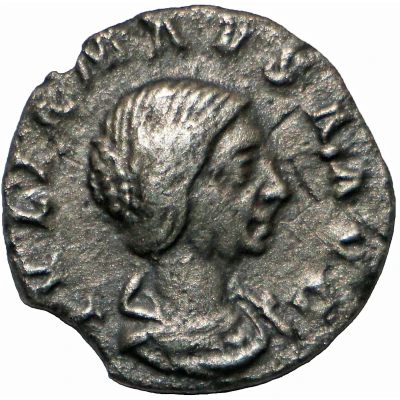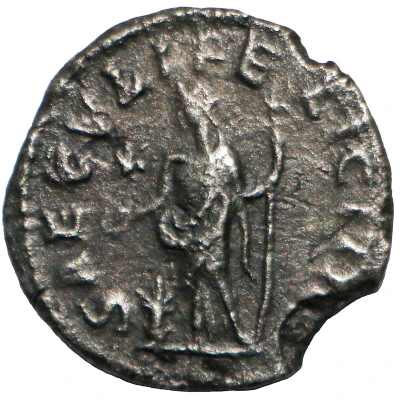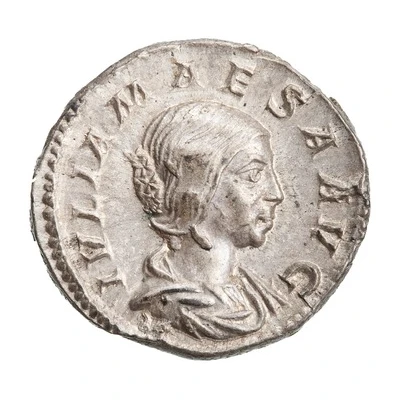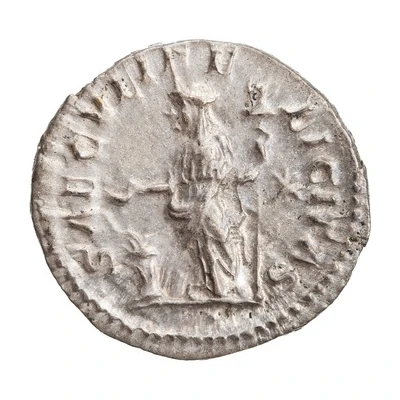


© John Conduitt (CC BY-SA)
Denarius - Julia Maesa SAECVLI FELICITAS; Felicitas
| Silver | 3 g | 19 mm |
| Issuer | Rome › Roman Empire (27 BC - 395 AD) |
|---|---|
| Emperor | Elagabalus (Sextus Varius Avitus Basianus) (218-222) |
| Type | Standard circulation coin |
| Years | 218-222 |
| Value | Denarius (½) |
| Currency | Antoninianus, Reform of Caracalla (AD 215 – 301) |
| Composition | Silver |
| Weight | 3 g |
| Diameter | 19 mm |
| Shape | Round (irregular) |
| Technique | Hammered |
| Orientation | Variable alignment ↺ |
| Demonetized | Yes |
| Updated | 2024-10-05 |
| Numista | N#276940 |
|---|---|
| Rarity index | 87% |
Reverse
Felicitas, draped, standing left, sacrifcing with patera in right hand over lighted altar and holding long caduceus in left hand; in left field, star.
Script: Latin
Lettering: SAECVLI FELICITAS
Unabridged legend: Saeculi Felicitas.
Translation: Age of good fortune.
Comment
Mass varies: 2.47–3.68 g;Diameter varies: 18–20 mm;
Example of this type:
American Numismatic Society (ANS)
Source:
Online Coins of the Roman Empire (OCRE)
Interesting fact
One interesting fact about the Denarius - Julia Maesa (SAECVLI FELICITAS; Felicitas) coin is that it features an image of Felicitas, the Roman goddess of good luck and prosperity, on its reverse side. This coin was minted during the reign of Emperor Elagabalus, who was known for his controversial and unconventional rule, and the image of Felicitas may have been a symbol of the emperor's desire to promote prosperity and good fortune throughout the empire.

